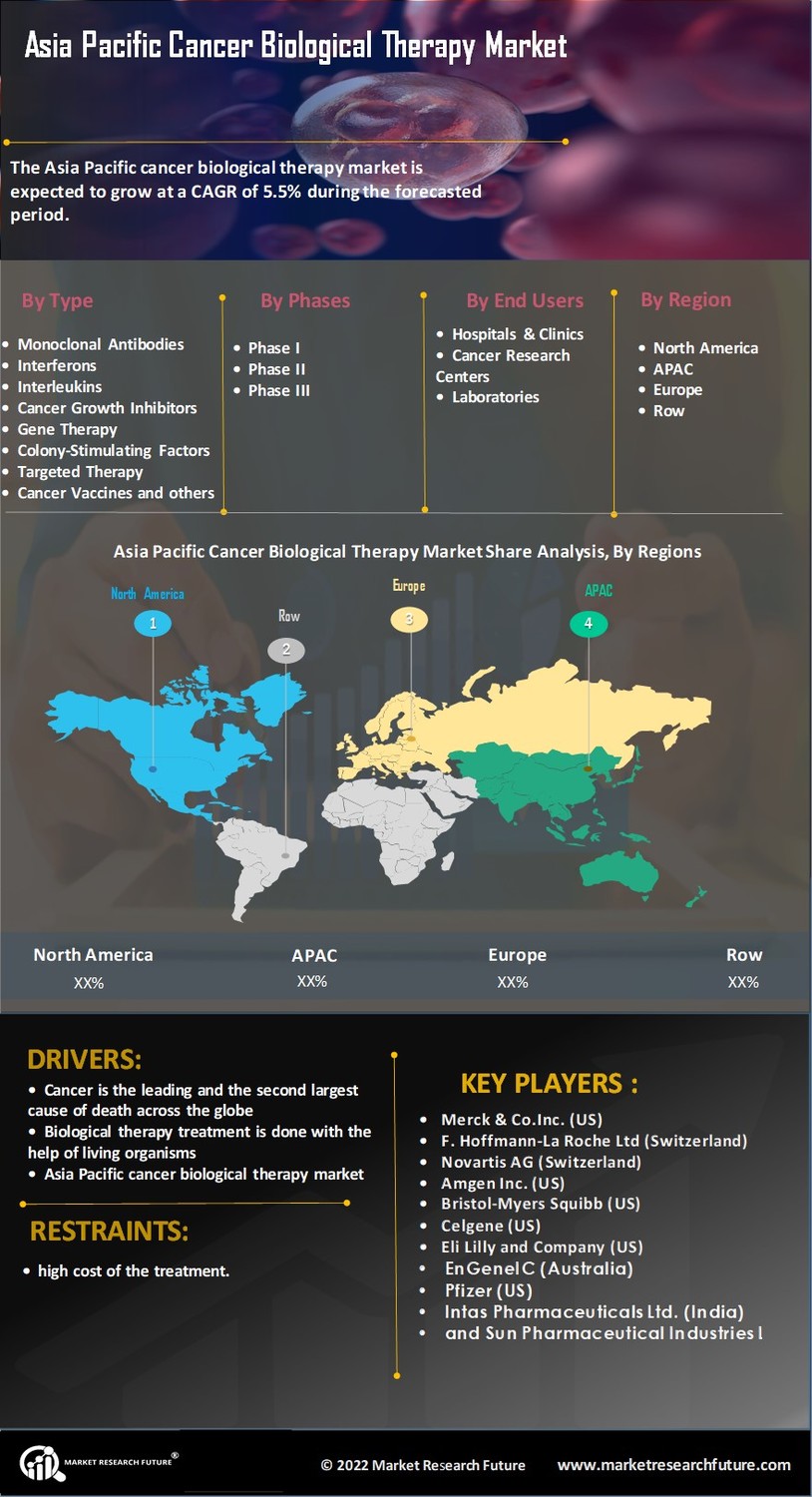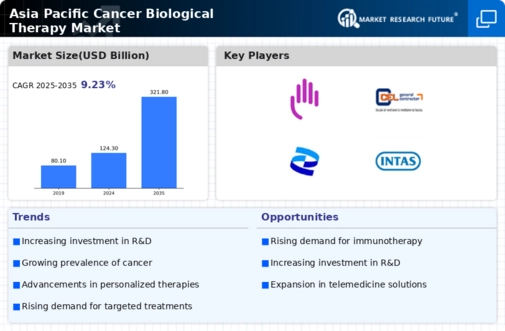APAC Cancer Biological Therapy Market Summary
The Asia-Pacific Cancer Biological Therapy market is projected to grow significantly from 124.3 USD Billion in 2024 to 321.8 USD Billion by 2035.
Key Market Trends & Highlights
Asia Pacific Cancer Biological Therapy Key Trends and Highlights
- The market is expected to experience a compound annual growth rate (CAGR) of 9.03 percent from 2025 to 2035.
- By 2035, the market valuation is anticipated to reach 321.8 USD Billion, indicating robust growth potential.
- In 2024, the market is valued at 124.3 USD Billion, reflecting a strong foundation for future expansion.
- Growing adoption of innovative therapies due to increasing cancer prevalence is a major market driver.
Market Size & Forecast
| 2024 Market Size | 124.3 (USD Billion) |
| 2035 Market Size | 321.8 (USD Billion) |
| CAGR (2025-2035) | 9.03% |
Major Players
Merck & Co., Inc. (US), F. Hoffmann-La Roche Ltd (Switzerland), Novartis AG (Switzerland), Amgen Inc. (US), Bristol-Myers Squibb (US), Celgene (US), Eli Lilly and Company (US), EnGeneIC (Australia), Pfizer (US), Intas Pharmaceuticals Ltd. (India), Sun Pharmaceutical Industries Ltd. (India)















Leave a Comment